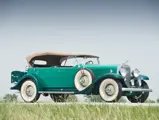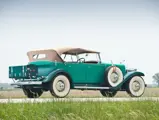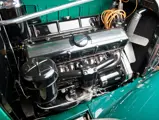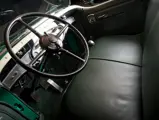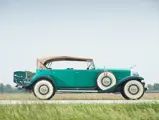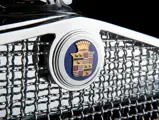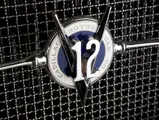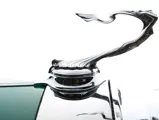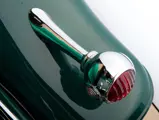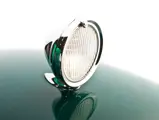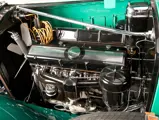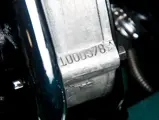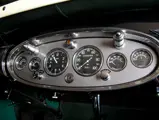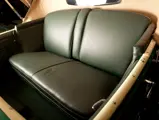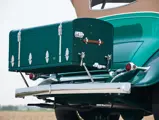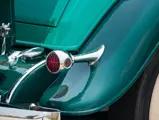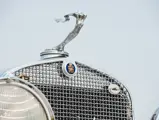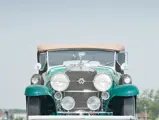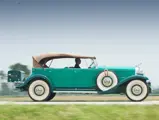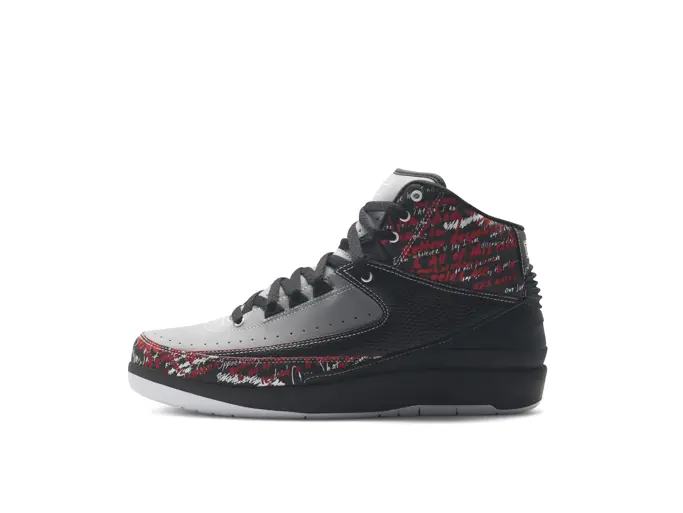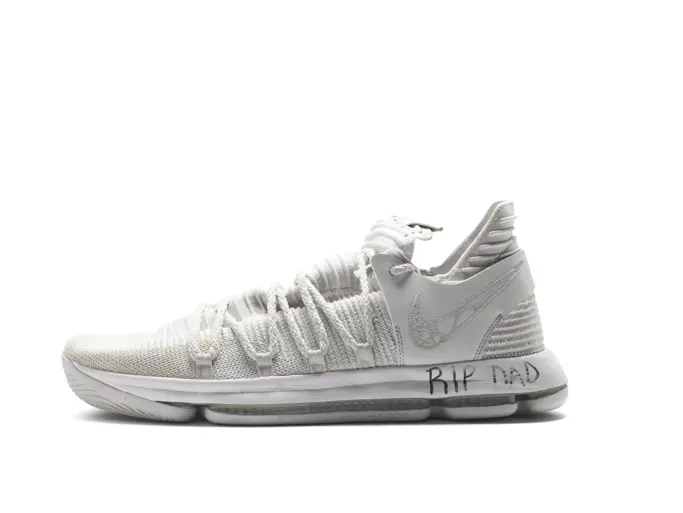St. John's 2011
1931 Cadillac V-12 Five-Passenger Phaeton by Fleetwood
{{lr.item.text}}
$200,750 USD | Sold
 | Plymouth, Michigan
| Plymouth, Michigan
{{internetCurrentBid}}
{{internetTimeLeft}}

Series 370. 135 bhp, 368 cu. in. overhead valve V-12 engine with three-speed manual transmission, solid front axle and live rear axle with semi-elliptic leaf springs, and four-wheel mechanical drum brakes. Wheelbase: 140"
- From the Lyle Reiswig Collection
- The fourth of only 128 bodies built with open phaeton coachwork
- Multiple award winner, shown at Pebble Beach in 2004
Cadillac made headlines in 1912 with the adoption of Charles Kettering’s new electric starting and ignition system. The following year, Cadillac won a second Dewar trophy in recognition of the system and late that year began advertising itself as the “Standard of the World,” perhaps a throwback to its earlier Dewar awarded for precision manufacture.
A V-8 engine was new for 1915, not a groundbreaking concept but a refined one that would be its hallmark for decades. It was given detachable cylinder heads in 1918 and a balanced crankshaft for 1924, when four-wheel brakes were also adopted. Although slightly trailing competing Packard in the late 1920s, Cadillac sold a steady 20,000 to 30,000 cars a year. With this as background, it may seem odd that in the autumn of 1930 Cadillac introduced a V-12 model.
At first glance, it seems foolhardy to have launched a twelve-cylinder car during the deepening Depression. Cadillac’s case appears especially reckless, for GM’s premier division introduced not only a V-12 but also a V-16, within months of one another. Actually, the sixteen, shown at January 1930’s New York Auto Show, had been a relative success, with more than 1,000 shipped in four months. The V-12 was basically the V-16 with some cylinders eliminated, although its bore was larger. The stroke remained the same. This resulted in 368 cubic inches from the 45-degree block, and like the sixteen it ran quietly, the benefit of hydraulic valve lifters. Rated at 135 brake horsepower, 30 less than its larger sibling, some V-12 aficionados feel it is better.
The twelve sold well, too, but at the expense of the sixteen. From September 1930, sales of the sixteen hit the skids, and the fact that the equivalent twelve was priced $2,500 lower certainly had something to do with it. Moreover, wheelbase aside, the cars looked very much alike, so the image of a V-12 seemed a much better bargain.
In any case, both the twelve and the sixteen remained in the catalog, side by side with the more popular V-8 models, through 1937.
A particularly sought-after body style, this V-12 Fleetwood five-passenger phaeton has had a ground-up restoration. The owner has informed RM that all numbers match the build sheet, including the ignition key. It has been painted in the original hues of Dark Harbor Green and Bedell Green, with cream pinstripe – a lovely combination of colors that suits this form perfectly. Such attention was paid to originality that it is featured in the Cadillac LaSalle Club’s authenticity manual. A complete set of side curtains accompanies the car. The restoration has been maintained very well, from the detailed engine compartment to the as-new leather upholstery and excellent, well-fitted top.
Since restoration it has been driven but 60 miles. Recent show credits include First in Class and People’s Choice at the Cadillac LaSalle Club 100th Anniversary of Cadillac show in Detroit in August 2002, First in Class at the Classic Car Club of America Grand Classic in Scottsdale, Arizona in March 2003, and People’s Choice at the CLC Sonoran Desert Region meet in 2003. It earned CCCA Senior status in 2004 and appeared at Pebble Beach that August. It received a Senior Award at the 2005 CLC Grand National at Des Moines in 2005 and President’s Choice at CLC Sonoran Desert Region in 2007.
Just 128 of this body style were built on Series 370 chassis. This is a chance to acquire an exceptionally nice example.

